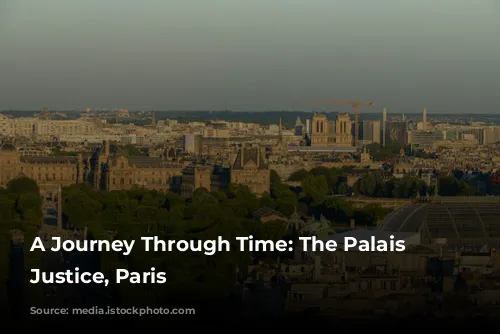The Palais de Justice, standing proudly on the Île de la Cité, is more than just a courthouse. It’s a living testament to centuries of French history, its walls echoing with the whispers of kings, revolutionaries, and judges. This grand palace, once the home of French royalty, now houses the Court of Appeal of Paris, France’s busiest appellate court, and the Court of Cassation, its highest court for ordinary cases.
From Royal Palace to Judicial Center
The Palais de Justice’s story begins with the Palais de la Cité, the medieval royal palace of France. King Robert II, in the 10th century, established a high court within the palace, where the Curia Regis, the King’s Council, met. This was later replaced by a grander hall, the Grand Chamber, built by King Philip IV in the 13th century. This vast hall served as the stage for theatrical performances and the seat of the Parlement of Paris, a judicial body composed of the French nobility.
Rise and Fall of the Parlement
In 1358, a Parisian uprising forced the future king, Charles V, to flee the city. The Parlement of Paris remained, however, functioning as an appeals court for royal tribunals and the primary court for nobility disputes. Its power grew as it held the authority to approve royal ordinances, acting as a counterbalance to the monarchy. The Parlement of Paris continued to play a crucial role in French judicial affairs, even after the monarchy’s departure, until the French Revolution in the late 18th century.
The Reign of Terror and Beyond
The French Revolution saw a dramatic shift in the Palais de Justice’s purpose. The Grand Chamber became the courtroom of the Revolutionary Tribunal, where those accused of opposing the Revolution were swiftly tried and sentenced to death. The guillotine, a symbol of the Revolution’s brutality, claimed the lives of over 2,700 individuals in just over two years.
The Palais de Justice, once a symbol of royal power, became synonymous with the revolution’s bloody reign. However, it continued to be a vital center of French justice throughout the 19th and 20th centuries, undergoing several renovations and expansions.

From Arson to Reconstruction
In the 19th century, the Palais de Justice was heavily remodeled, incorporating neo-Renaissance architectural elements. However, the building’s history was marked by tragedy when it was nearly destroyed by arson during the Paris Commune in 1871. Despite the devastation, the Palais de Justice was rebuilt and emerged as a symbol of resilience.

A Modern Face for Justice
By the 21st century, the Palais de Justice had become too small to accommodate its increasing workload. In 2018, the Tribunal judiciaire de Paris, the court formerly known as the Tribunal de grande instance de Paris, was moved to a modern high-rise building designed by renowned architect Renzo Piano.

A Legacy of Justice and History
The Palais de Justice stands as a reminder of the enduring power of law and justice. Its rich history reflects the ever-evolving nature of French society, from the days of kings to the modern age. The building is a testament to the enduring human spirit, capable of surviving even the most tumultuous periods. It continues to be a place where justice is dispensed, a symbol of the French legal system’s strength and resilience.









